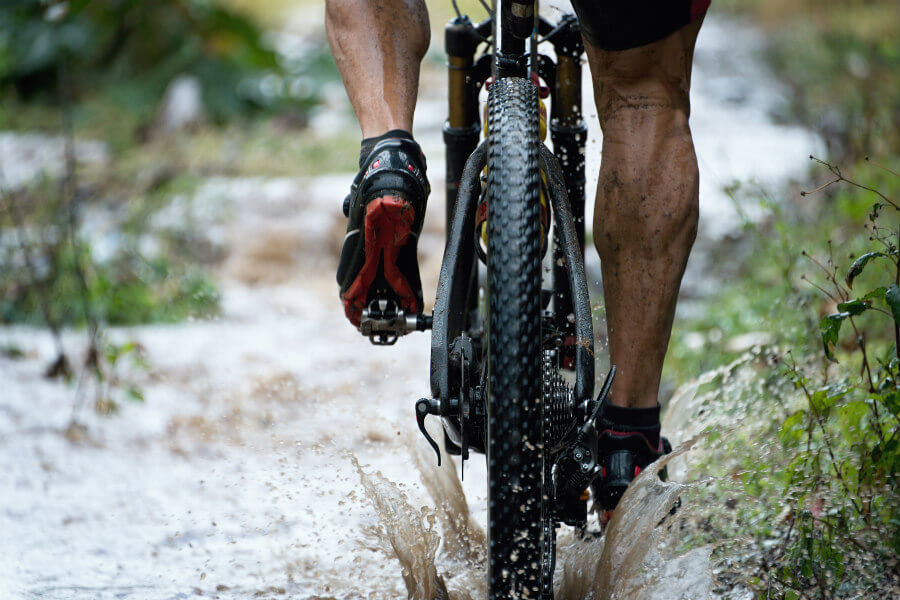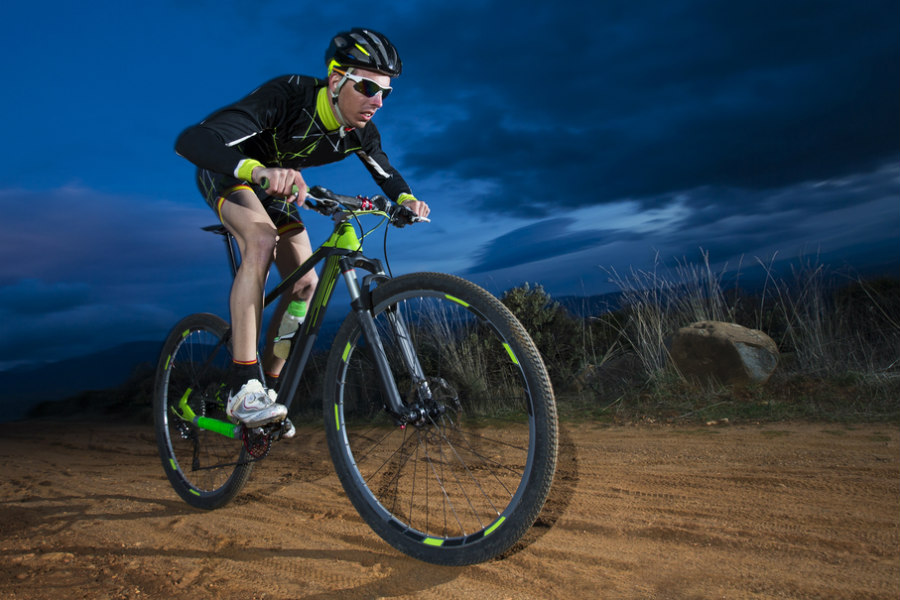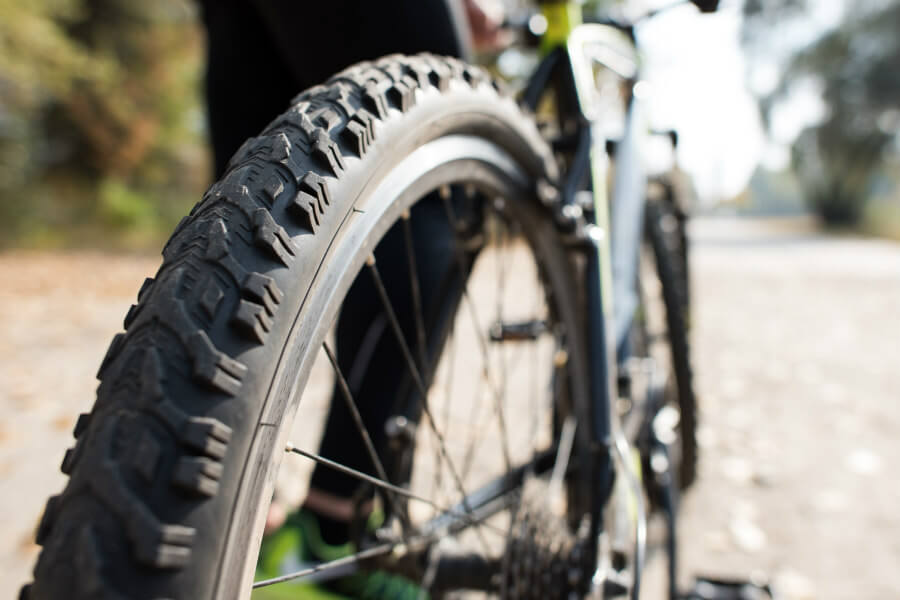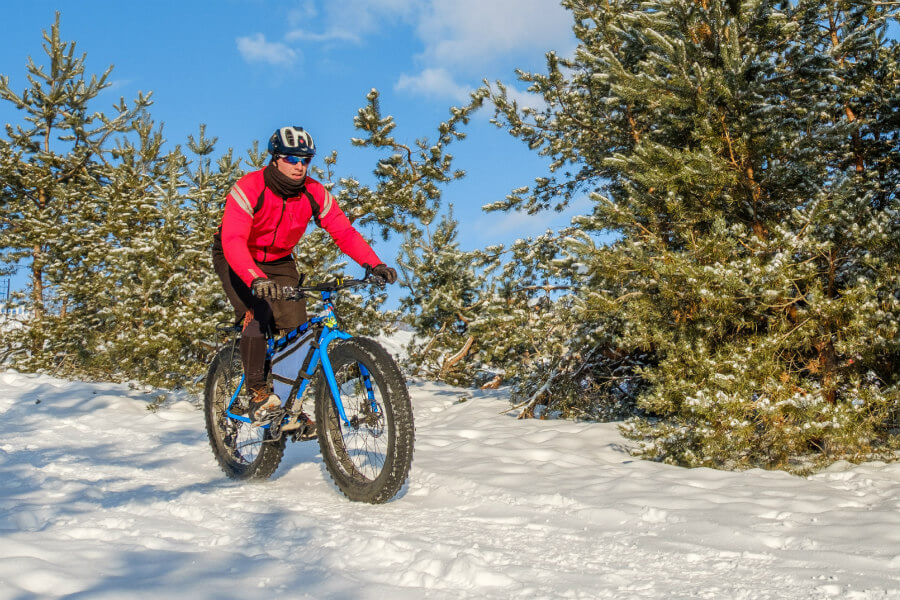We like the mountain. The trails, the hard tracks, the trialeras ... The mountain bike is a pass. So far we all agree, and although road cycling and serious/cx can generate huge happiness, I think we will all agree that the BTT provides us with something special.
That something I understand in two directions: direct contact with nature, and the tremendous physical effort that also supposes a greater fun due to the technical factor of this modality.
Now, not all bicycles are designed for the same use and depending on the components that we carry we will enjoy more or less. One of the elements that make the difference are the wheels.
Until not long ago all mountain bicycles set up wheels of 26 ". Now the market throws through those of 29" and 27. "5. What wheel measure is better? We are going to compare them.
>> Are the mountain wheels of 26 "really dead?
What wheels are faster?

The one who writes to you speaks with knowledge of the cause, since I was possessing a 26 ”Specialized Rockhopper, a 27.5” finalist Mondraker of 27.5 ”and several models of 29”, among which my current Canyon Excel Exceed SLX 9.0 stands out.
In terms of speed, there is no color. The larger wheel size generates a Mayo in inertia, which is a magnitude that speaks of the kinetic energy that each point of the outside and tangential of a steering wheel has (a circumference revolving around an axis). Greater mass and greater distance to the axis, generate greater energy, and therefore more speed.
Therefore, and based on physics, we can say that a 29 ”wheel makes a bicycle faster to the same effort of the cyclist. However, there is a problem: acceleration.
>> What you need to know to buy some Mountain Bike wheels
The energy that the wheels have is achieved with the pedaling, that is, the physical effort of the cyclist, and it is evident that to begin the movement in a bicycle with 29 ”wheels, it is needed a greater effort than in a bike with wheels of 27 ,5".
On the other hand, once the bicycle has been thrown, with 29 ”less effort is required to maintain the speed, thanks to the greater energy of the inertia steering wheel (or moment of inertia if we talk about specific points of the roof).
What wheels are more manageable?

For technical increases, a 27.5 ”bicycle could be more practical. Based on what is commented in the previous point, less effort is required by the cyclist when making rhythm and starting from standing.
However, if we talk about declines, the controversy begins. The vast majority of
Bikers of descent and enduro they carry - or carried until recently - bicycles with wheels of 27.5 ”. This is because a lower wheel size is easier to handle, so maneuverability in technical zones increases with respect to 29 ”.
But what about the common of mortals? 90% of those who make mountain cycling are not diving DH rivers, this is so. That is why we could talk about the fact that comfort prevails when facing rocks, trunks and broken areas in the face of maneuvering capacity. It is not our cycling, it is clear.
>> The advantages of wearing tubess wheels in Mountain Bike
Let's give an example: you are going down a narrow path where there are not many options when it comes to dodging obstacles. Suddenly, a little
Rockgarden followed by a small cross trunk along the way.
In this case, a larger wheel diameter favors that you can pass over that area without almost disgusting.
On the contrary, if that small trunk was turned 90 degrees, that is, on the longitudinal axis of the path, with 27.5 ”wheels you could better place the bike to avoid it.
What wheels offer more traction?

Here the 29 ”tires win by a win, since a wheel, always compared to the same pressure, generates a greater footprint the greater its diameter.
I remind you that traction is everything in mountain cycling, especially climbing. Going down it is true that it also represents a great advantage, but mostly due to the ability to absorb impacts and irregularities of the terrain, since a greater contact surface and a greater amount of air inside the roof generate greater comfort.
At this point the pressures should be taken into account, but this is something that perhaps we should address more thoroughly in another article.
It is not a matter of weight
There are more and more mountain cyclists obsessed with having the bicycle lighter as possible. The weight could be a factor to consider when choosing mountain bike of 27.5 ”or 29”, but it is not.
The wheels of 27.5 ”are currently mounted or in small sizes (XS and S) or in Enduro and DH bicycles, although with quite generous roof balls, around 2.6”.
>> The key to lighten the weight of your bicycle is on the wheels
Therefore, if we compare two bicycles in size M, one with 27.5 ”wheels and covered 2.6” and another with 29 ”wheels and covered 2.2”, the question of the difference in weight is diluted.
Plus wheels, solution to all problems?

While we already had three clearly differentiated wheel sizes, even by modality, now the industry curls the curl to save us all with the arrival of the plus sizes: 27.5 ”plus and 29” plus (specified in some cases such as 27.5 " + and 29 "+).
The wheels 27.5 ”plus, by diameter (including its generous covers), can be compared to 29”. This is how we see that a 27.5 ”+ wheel+ with a roof 3.25”: It has practically the same diameter as a 29 ”wheel with a roof 2.35”.
The fact is that in these conditions the minor wheel gives us greater comfort thanks to a larger ball, greater traction thanks to a greater footprint (at low pressures) and similar absorption of irregularities of the terrain and wheel of inertia.
The only problem is that one could say that they are little rolling, since the footprint is significantly greater, especially in the transverse axis (wide).
>> Welcome to the semi-Fatbikes: so are the wheels of 27.5 "plus
If we talk about 29 ”+wheels, we are going to a really large wheel. They are what we could resemble the younger sister of Fatbike, bicycles that have really failed in the market, but with greater diameter (the fatbike are, or were, 26 ”).
With covers of more than 3 ”in all cases, bicycles with wheels 29”+ are recommended for very high people. From my experience and knowledge, I would say that for more than 1.95m.
What measure of wheels is my favorite?
In the absence of having tried models
oversized, although I have set up in Fatbike, I think the 29 ”standard for medium sizes is unbeatable.
The technique is acquired, which ceases to be a problem in most situations. And with the appropriate covers we have a very capable type of bicycle both in demanding ups and downs and in more rolling areas, where it is clearly far superior to the rest of the options.
And you, what wheel size do you prefer?
 The one who writes to you speaks with knowledge of the cause, since I was possessing a 26 ”Specialized Rockhopper, a 27.5” finalist Mondraker of 27.5 ”and several models of 29”, among which my current Canyon Excel Exceed SLX 9.0 stands out.
In terms of speed, there is no color. The larger wheel size generates a Mayo in inertia, which is a magnitude that speaks of the kinetic energy that each point of the outside and tangential of a steering wheel has (a circumference revolving around an axis). Greater mass and greater distance to the axis, generate greater energy, and therefore more speed.
Therefore, and based on physics, we can say that a 29 ”wheel makes a bicycle faster to the same effort of the cyclist. However, there is a problem: acceleration.
>> What you need to know to buy some Mountain Bike wheels
The energy that the wheels have is achieved with the pedaling, that is, the physical effort of the cyclist, and it is evident that to begin the movement in a bicycle with 29 ”wheels, it is needed a greater effort than in a bike with wheels of 27 ,5".
On the other hand, once the bicycle has been thrown, with 29 ”less effort is required to maintain the speed, thanks to the greater energy of the inertia steering wheel (or moment of inertia if we talk about specific points of the roof).
The one who writes to you speaks with knowledge of the cause, since I was possessing a 26 ”Specialized Rockhopper, a 27.5” finalist Mondraker of 27.5 ”and several models of 29”, among which my current Canyon Excel Exceed SLX 9.0 stands out.
In terms of speed, there is no color. The larger wheel size generates a Mayo in inertia, which is a magnitude that speaks of the kinetic energy that each point of the outside and tangential of a steering wheel has (a circumference revolving around an axis). Greater mass and greater distance to the axis, generate greater energy, and therefore more speed.
Therefore, and based on physics, we can say that a 29 ”wheel makes a bicycle faster to the same effort of the cyclist. However, there is a problem: acceleration.
>> What you need to know to buy some Mountain Bike wheels
The energy that the wheels have is achieved with the pedaling, that is, the physical effort of the cyclist, and it is evident that to begin the movement in a bicycle with 29 ”wheels, it is needed a greater effort than in a bike with wheels of 27 ,5".
On the other hand, once the bicycle has been thrown, with 29 ”less effort is required to maintain the speed, thanks to the greater energy of the inertia steering wheel (or moment of inertia if we talk about specific points of the roof).
 For technical increases, a 27.5 ”bicycle could be more practical. Based on what is commented in the previous point, less effort is required by the cyclist when making rhythm and starting from standing.
However, if we talk about declines, the controversy begins. The vast majority of Bikers of descent and enduro they carry - or carried until recently - bicycles with wheels of 27.5 ”. This is because a lower wheel size is easier to handle, so maneuverability in technical zones increases with respect to 29 ”.
But what about the common of mortals? 90% of those who make mountain cycling are not diving DH rivers, this is so. That is why we could talk about the fact that comfort prevails when facing rocks, trunks and broken areas in the face of maneuvering capacity. It is not our cycling, it is clear.
>> The advantages of wearing tubess wheels in Mountain Bike
Let's give an example: you are going down a narrow path where there are not many options when it comes to dodging obstacles. Suddenly, a little Rockgarden followed by a small cross trunk along the way.
In this case, a larger wheel diameter favors that you can pass over that area without almost disgusting.
On the contrary, if that small trunk was turned 90 degrees, that is, on the longitudinal axis of the path, with 27.5 ”wheels you could better place the bike to avoid it.
For technical increases, a 27.5 ”bicycle could be more practical. Based on what is commented in the previous point, less effort is required by the cyclist when making rhythm and starting from standing.
However, if we talk about declines, the controversy begins. The vast majority of Bikers of descent and enduro they carry - or carried until recently - bicycles with wheels of 27.5 ”. This is because a lower wheel size is easier to handle, so maneuverability in technical zones increases with respect to 29 ”.
But what about the common of mortals? 90% of those who make mountain cycling are not diving DH rivers, this is so. That is why we could talk about the fact that comfort prevails when facing rocks, trunks and broken areas in the face of maneuvering capacity. It is not our cycling, it is clear.
>> The advantages of wearing tubess wheels in Mountain Bike
Let's give an example: you are going down a narrow path where there are not many options when it comes to dodging obstacles. Suddenly, a little Rockgarden followed by a small cross trunk along the way.
In this case, a larger wheel diameter favors that you can pass over that area without almost disgusting.
On the contrary, if that small trunk was turned 90 degrees, that is, on the longitudinal axis of the path, with 27.5 ”wheels you could better place the bike to avoid it.
 Here the 29 ”tires win by a win, since a wheel, always compared to the same pressure, generates a greater footprint the greater its diameter.
I remind you that traction is everything in mountain cycling, especially climbing. Going down it is true that it also represents a great advantage, but mostly due to the ability to absorb impacts and irregularities of the terrain, since a greater contact surface and a greater amount of air inside the roof generate greater comfort.
At this point the pressures should be taken into account, but this is something that perhaps we should address more thoroughly in another article.
Here the 29 ”tires win by a win, since a wheel, always compared to the same pressure, generates a greater footprint the greater its diameter.
I remind you that traction is everything in mountain cycling, especially climbing. Going down it is true that it also represents a great advantage, but mostly due to the ability to absorb impacts and irregularities of the terrain, since a greater contact surface and a greater amount of air inside the roof generate greater comfort.
At this point the pressures should be taken into account, but this is something that perhaps we should address more thoroughly in another article.
 While we already had three clearly differentiated wheel sizes, even by modality, now the industry curls the curl to save us all with the arrival of the plus sizes: 27.5 ”plus and 29” plus (specified in some cases such as 27.5 " + and 29 "+).
The wheels 27.5 ”plus, by diameter (including its generous covers), can be compared to 29”. This is how we see that a 27.5 ”+ wheel+ with a roof 3.25”: It has practically the same diameter as a 29 ”wheel with a roof 2.35”.
The fact is that in these conditions the minor wheel gives us greater comfort thanks to a larger ball, greater traction thanks to a greater footprint (at low pressures) and similar absorption of irregularities of the terrain and wheel of inertia.
The only problem is that one could say that they are little rolling, since the footprint is significantly greater, especially in the transverse axis (wide).
>> Welcome to the semi-Fatbikes: so are the wheels of 27.5 "plus
If we talk about 29 ”+wheels, we are going to a really large wheel. They are what we could resemble the younger sister of Fatbike, bicycles that have really failed in the market, but with greater diameter (the fatbike are, or were, 26 ”).
With covers of more than 3 ”in all cases, bicycles with wheels 29”+ are recommended for very high people. From my experience and knowledge, I would say that for more than 1.95m.
While we already had three clearly differentiated wheel sizes, even by modality, now the industry curls the curl to save us all with the arrival of the plus sizes: 27.5 ”plus and 29” plus (specified in some cases such as 27.5 " + and 29 "+).
The wheels 27.5 ”plus, by diameter (including its generous covers), can be compared to 29”. This is how we see that a 27.5 ”+ wheel+ with a roof 3.25”: It has practically the same diameter as a 29 ”wheel with a roof 2.35”.
The fact is that in these conditions the minor wheel gives us greater comfort thanks to a larger ball, greater traction thanks to a greater footprint (at low pressures) and similar absorption of irregularities of the terrain and wheel of inertia.
The only problem is that one could say that they are little rolling, since the footprint is significantly greater, especially in the transverse axis (wide).
>> Welcome to the semi-Fatbikes: so are the wheels of 27.5 "plus
If we talk about 29 ”+wheels, we are going to a really large wheel. They are what we could resemble the younger sister of Fatbike, bicycles that have really failed in the market, but with greater diameter (the fatbike are, or were, 26 ”).
With covers of more than 3 ”in all cases, bicycles with wheels 29”+ are recommended for very high people. From my experience and knowledge, I would say that for more than 1.95m.































